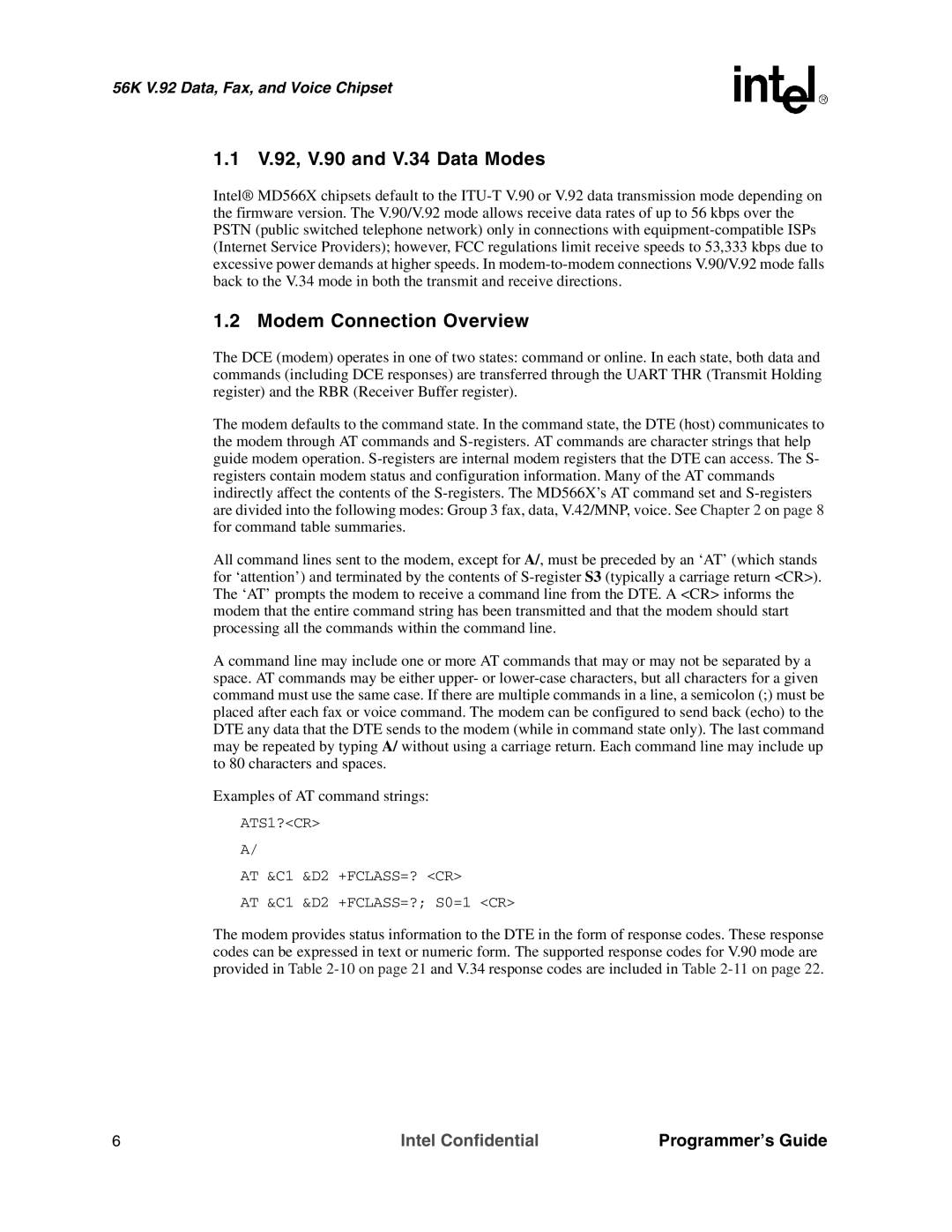1.1 V.92, V.90 and V.34 Data Modes
Intel® MD566X chipsets default to the ITU-T V.90 or V.92 data transmission mode depending on the firmware version. The V.90/V.92 mode allows receive data rates of up to 56 kbps over the PSTN (public switched telephone network) only in connections with equipment-compatible ISPs (Internet Service Providers); however, FCC regulations limit receive speeds to 53,333 kbps due to excessive power demands at higher speeds. In modem-to-modem connections V.90/V.92 mode falls back to the V.34 mode in both the transmit and receive directions.
1.2 Modem Connection Overview
The DCE (modem) operates in one of two states: command or online. In each state, both data and commands (including DCE responses) are transferred through the UART THR (Transmit Holding register) and the RBR (Receiver Buffer register).
The modem defaults to the command state. In the command state, the DTE (host) communicates to the modem through AT commands and S-registers. AT commands are character strings that help guide modem operation. S-registers are internal modem registers that the DTE can access. The S- registers contain modem status and configuration information. Many of the AT commands indirectly affect the contents of the S-registers. The MD566X’s AT command set and S-registers are divided into the following modes: Group 3 fax, data, V.42/MNP, voice. See Chapter 2 on page 8 for command table summaries.
All command lines sent to the modem, except for A/, must be preceded by an ‘AT’ (which stands for ‘attention’) and terminated by the contents of S-register S3 (typically a carriage return <CR>). The ‘AT’ prompts the modem to receive a command line from the DTE. A <CR> informs the modem that the entire command string has been transmitted and that the modem should start processing all the commands within the command line.
A command line may include one or more AT commands that may or may not be separated by a space. AT commands may be either upper- or lower-case characters, but all characters for a given command must use the same case. If there are multiple commands in a line, a semicolon (;) must be placed after each fax or voice command. The modem can be configured to send back (echo) to the DTE any data that the DTE sends to the modem (while in command state only). The last command may be repeated by typing A/ without using a carriage return. Each command line may include up to 80 characters and spaces.
Examples of AT command strings:
ATS1?<CR>
A/
AT &C1 &D2 +FCLASS=? <CR>
AT &C1 &D2 +FCLASS=?; S0=1 <CR>
The modem provides status information to the DTE in the form of response codes. These response codes can be expressed in text or numeric form. The supported response codes for V.90 mode are provided in Table 2-10 on page 21 and V.34 response codes are included in Table 2-11 on page 22.
